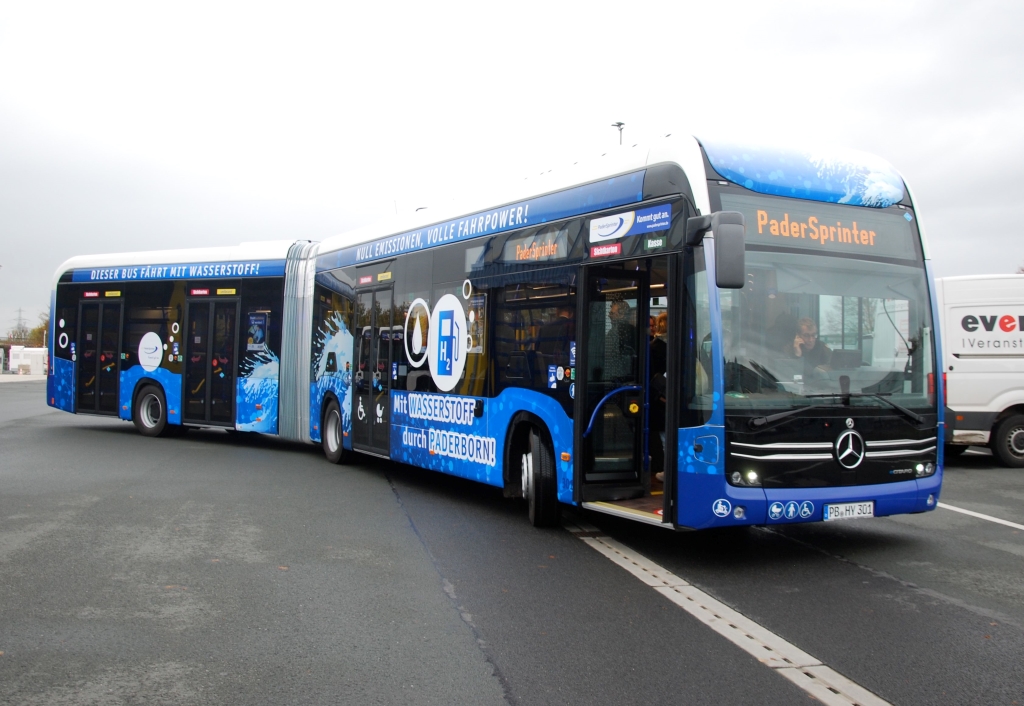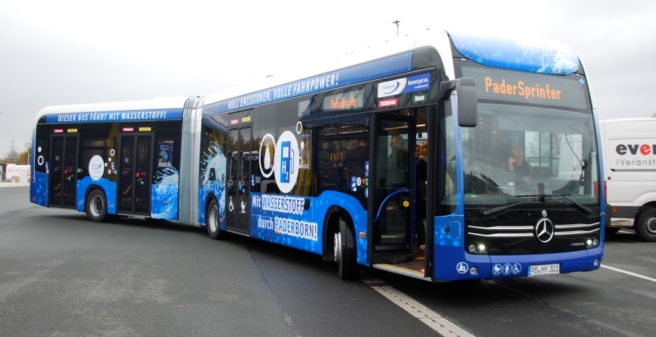
Paderborn is located in the east of North Rhine-Westphalia. The city has approximately 157,000 inhabitants.
There had been a tramway in Paderborn since 1900, initially founded and operated by a merchant from Bochum. On 9 January 1909, the company was transformed into PESAG (Paderborner Elektrizitätswerk- und Straßenbahn AG). PESAG operated an extensive interurban tram network that extended far into the surrounding area and even into the then neighbouring state of Lippe-Detmold (today also part of North Rhine-Westphalia).
On 27 September 1963, a tram ran for the last time in Paderborn; since then, PESAG has been a bus-only operation. Initially, solo buses were used, sometimes with trailers. Around 1980, it was decided that articulated vehicles could also be useful. To “try it out”, they bought a used articulated bus from the Lübeck public utility company, a Mercedes-Benz O 317 with a body from the Berlin bodywork factory Gaubschat numbered 81. And there are still predominantly articulated buses in Paderborn today.
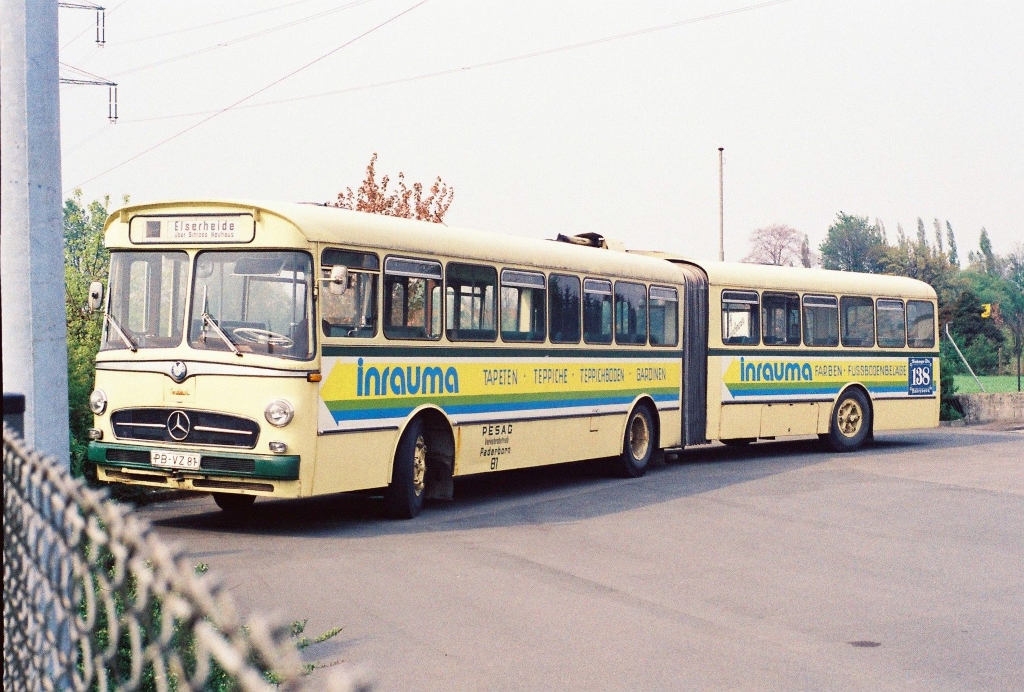
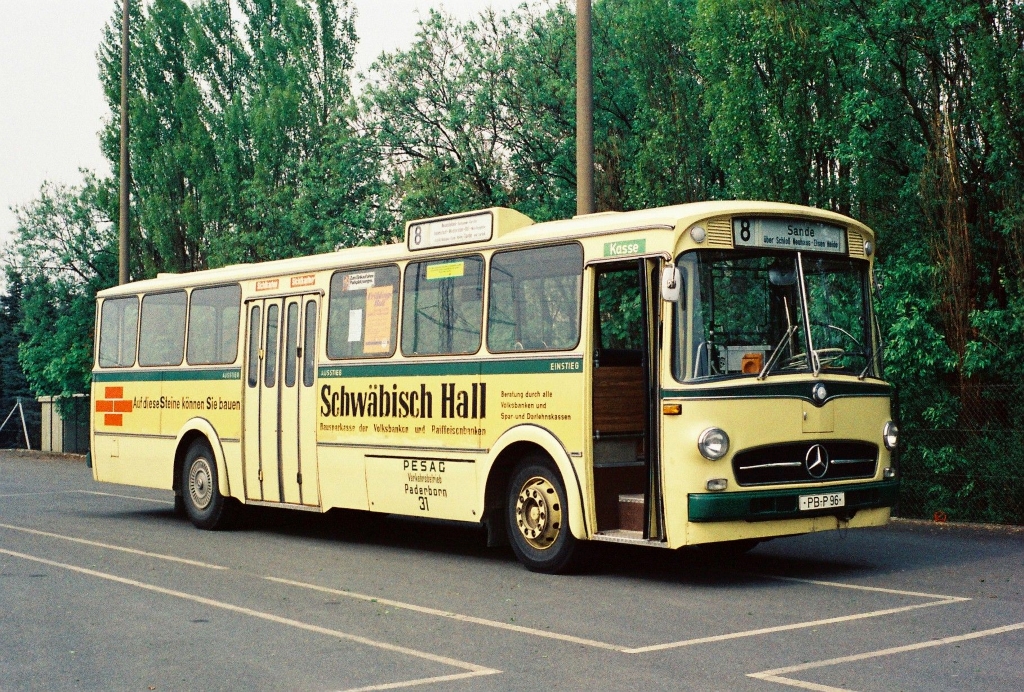
In the meantime, Paderborn’s transport company has changed from a private-law file company, PESAG, to a municipal-owned company, which bears the name “PaderSprinter”.
The eCitaro articulated bus with fuel cell range extender
Gone are the days when Paderborn was rather reluctant to embrace new technology (see the second-hand articulated bus from Lübeck). Quite the opposite! Today, Paderborn is at the forefront of new technology.
The decision was made early on to drive its buses electrically in the future. And with battery-electric buses. In January 2022, the first Mercedes articulated bus of the type “Mercedes eCitaro G” (with the registration number “DO-OZ 3000”) arrived, which remained in service in the city with Germany’s shortest river – the Pader is only four kilometres long and then flows into the Lippe – until August 2023, i.e. for 20 months. It proved its worth in the city.
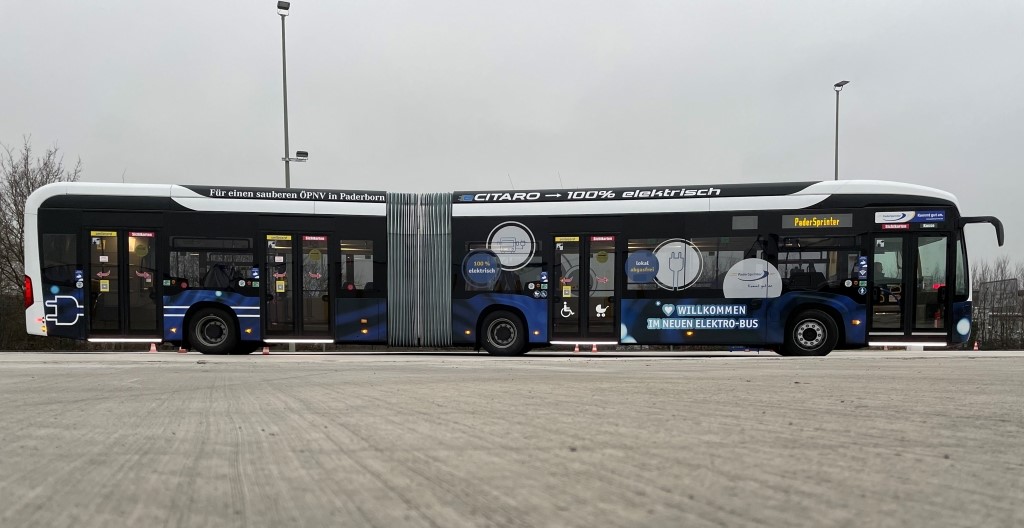
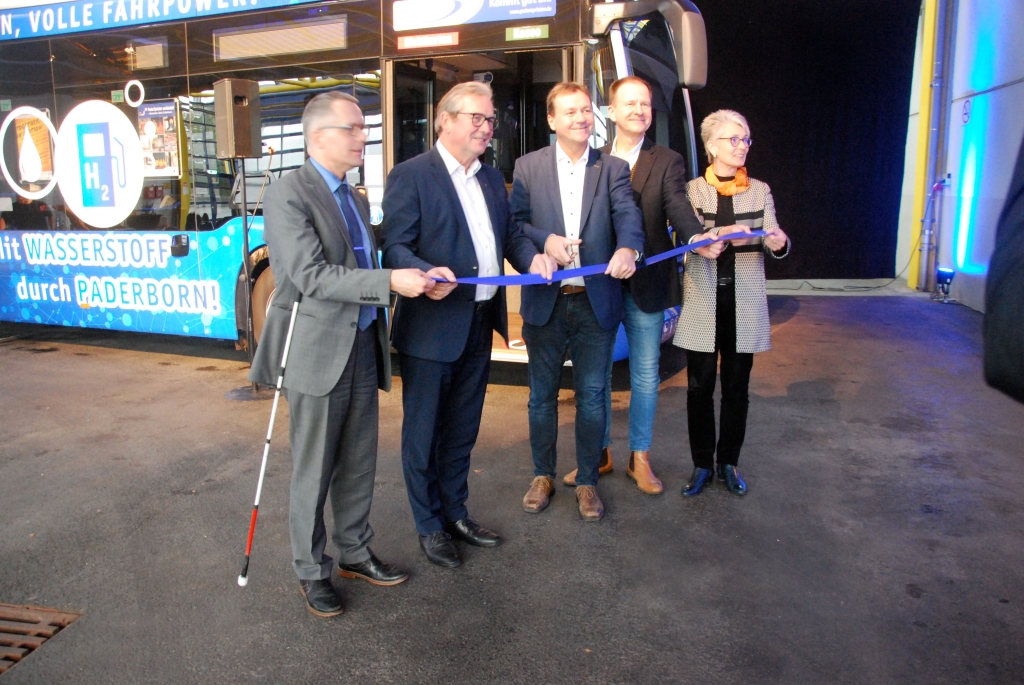
On 9 November 2023, the PaderSprinter started a new way of bus operation: the world’s first Mercedes-Benz eCitaro articulated bus that can not only run on its batteries, but also has a fuel cell as a range extender. It has been branded Mercedes-Benz eCitaro G REX – REX for Range EXtender. It is the world’s first bus of this type to go into regular service. At the presentation of the vehicle, representative from Daimler Buses mentioned four more buses of this type which are currently under construction: two each for Stuttgart’s SSB and Hamburg’s HHA. However, Paderborn is the first!
The idea behind this technical solution is as simple as obvious. While Mercedes specifies the range of an eCitaro articulated vehicle, which only has batteries, with approx. 200 kilometres, the vehicle with the fuel cell range extender can already manage up to 400 kilometres. What did PaderSprinter say at the presentation? “This bus can operate any route in our network without us having to worry about the range.”
The vehicle’s batteries work with the cell chemistry NMC (nickel-manganese-cobalt) and have found their place in the rear of the bus (where the diesel bus has its engine compartment) and on the roof. They have a capacity of 396 kWh. The fuel cell comes from the Japanese manufacturer Toyota, has an output of 60 kW and is located on the roof of the rear vehicle. The bus’s hydrogen tank holds 30 kilograms of hydrogen; it consists of six pressurised cylinders (5 kilograms each) made of composite plastic and is located on the roof of the front vehicle above the front axle.
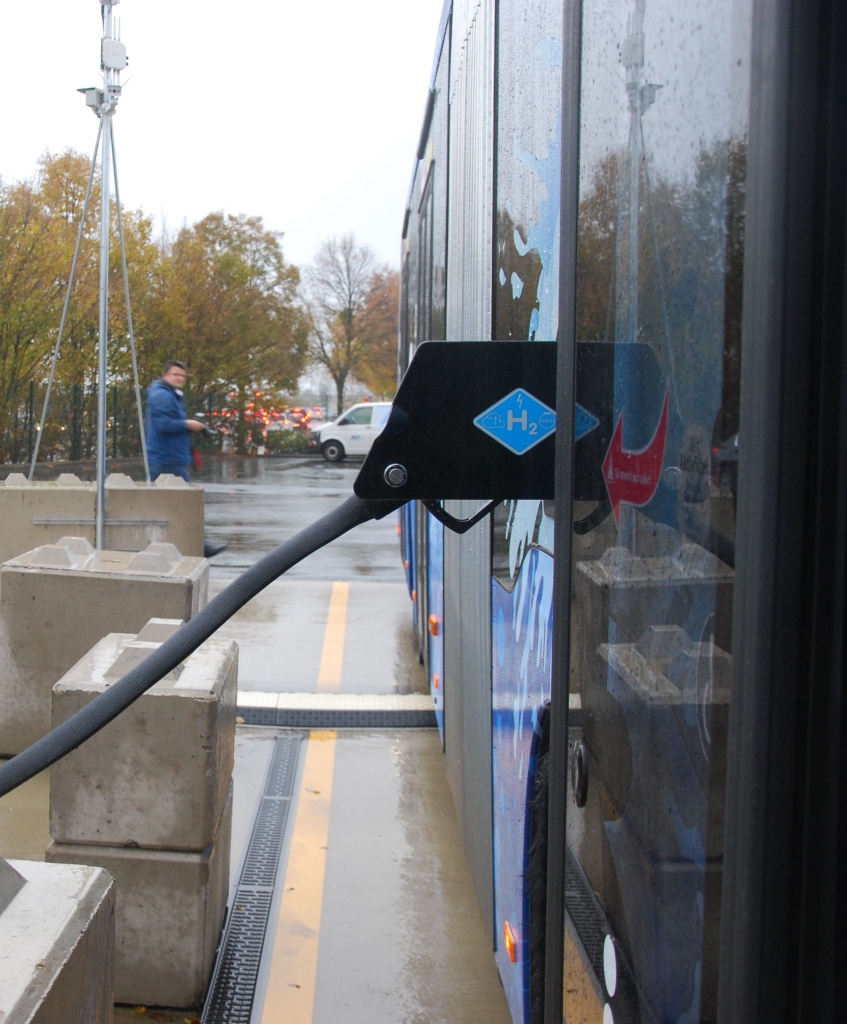
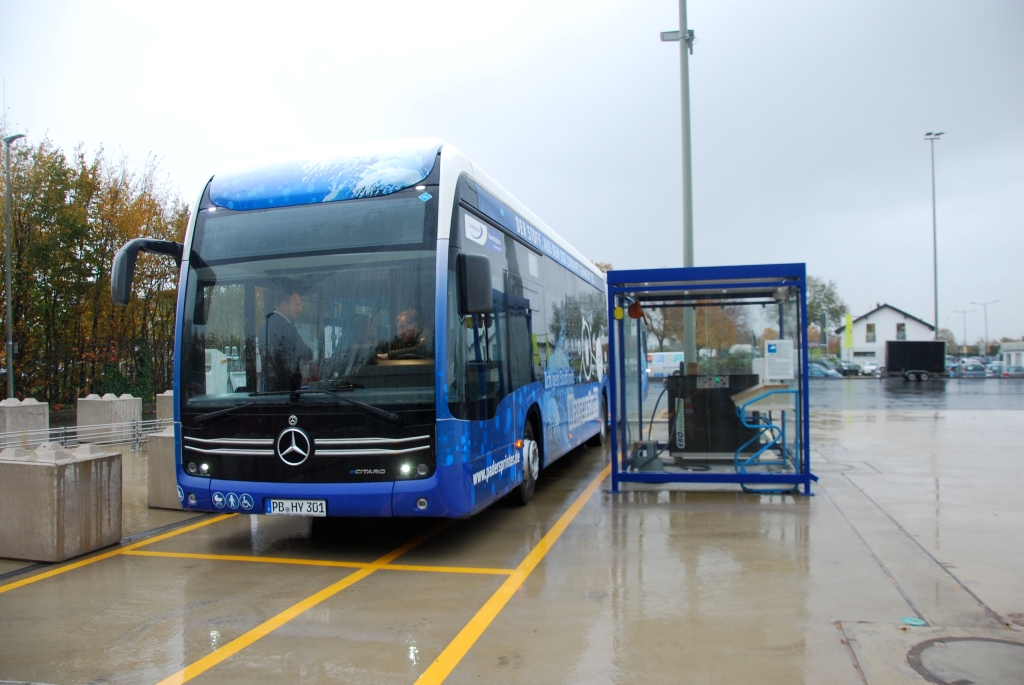
Refuelling takes place exclusively at the depot and simultanously for both modes of operation. The bus drives to its charging station and is connected to the cable for electric recharging on the left and to the hydrogen refuelling station on the right. And because the electric recharging takes a little time, the hydrogen does not have to be “pressed” into the bus at high pressure. Incidentally, the hydrogen bus has to share its charging station at the PaderSprinter depot with a hydrogen refuse lorry from the municipal refuse collection service, which also has to come to the PaderSprinter depot to refuel.
Mercedes has decided that the bus should initially run on the electricity from its batteries. Only when this runs out will the fuel cell take over the power supply. But if that is what you want, there is another way: you could run the hydrogen cylinders empty first and then switch to the batteries. And there is also a third option: you can drive with both drive systems in parallel right from the start.
The bus can carry up to 138 passengers.
